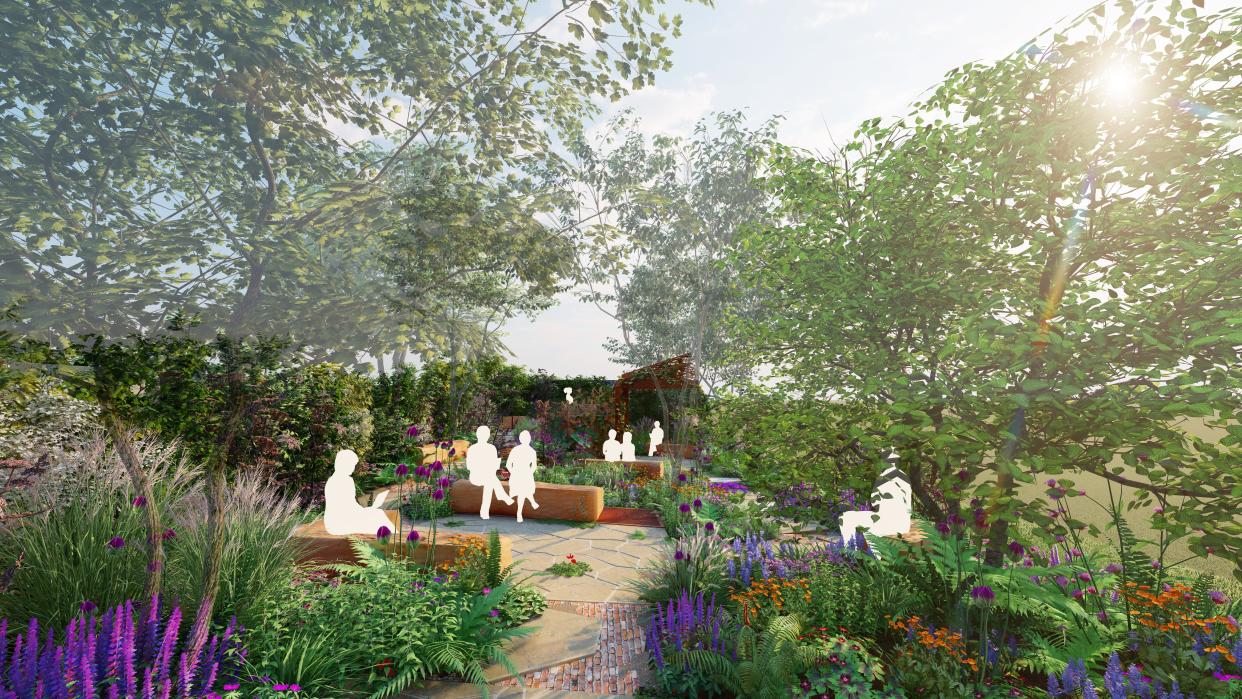Chelsea Flower Show gardens given first ever green audit to reduce footprint
All large gardens displayed at the Chelsea Flower Show have gone through a “green audit” as part of efforts to reduce the event’s environmental footprint.
The Royal Horticultural Society (RHS), which runs the famous show, has introduced a “green garden audit” for the first time ahead of this year’s event in May.
All gardens in the Show and Sanctuary categories – the largest on display – were reviewed by landscape design firm Nicholsons alongside RHS head of sustainability Malcolm Anderson.
Before being built, they analysed the gardens’ designs against a range of sustainability criteria, including material selection, waste, biodiversity and ecology, water and air.
They then worked with the designers and contractors to adjust their plans to reduce the environmental footprint of the projects.

RHS said the design changes implemented had “a significant impact” after reducing carbon emissions across the two categories by 28%.
The biggest cuts achieved were through new choices on building materials and construction methods, it added.
For example, Matthew Childs, who is designing the Terrance Higgins Trust Bridge to 2030 Garden, reduced his carbon emissions by removing block walling in his original design and replacing it with reclaimed timber.
Meanwhile, Ann-Marie Powell, designer of The Octavia Hill Garden by Blue Diamond with the National Trust, saved a large amount of CO2 by significantly reducing the use of cement.
Liz Nicholson, Nicholsons’ managing director, said: “All of the designers without exception have welcomed the audit and embraced the learnings and worked incredibly hard to adapt and tweak their gardens to reduce the impacts.
“Many design with the planet in mind and very few changes were necessary. But even these celebrated designers discovered one or two new opportunities and were open-minded to tweak their designs.
“Designers felt that this process would affect how they design in future and were keen to take their learnings back to their practices.”

Mr Anderson said the audit was “one step further” following last year’s addition of sustainability criteria to the show’s selection process, which aimed to ensure candidates “thought about the environmental impact of their gardens at the design stage”.
“As the UK’s leading gardening charity, we have been making positive changes across the organisation and at our shows to make our practices more sustainable and this is just one example of the progress we are making this year as we continue to make changes to reduce our environmental impact,” he said.
The move has enabled RHS “to better understand the carbon footprint of the gardens at the show”, Mr Anderson added.
He said the charity also hopes to open up the conversation more widely within the horticultural industry on how to create gardens more sustainably in the future.
As part of the efforts to recognise sustainability at the show, the RHS is also introducing the new “Environmental Innovation Award” this year, which is open to all gardens that have been through the green audit.
Sarah Poll, RHS’s head of shows development, said: “The RHS has a responsibility to take a leading role in encouraging everyone to progress and drive environmental innovation and collaborate with the industry to make positive, sustainable changes.
“We hope by celebrating successes through this new award at our world-famous flower show and showing how small changes can make a big difference through the new green garden audit we will help continue to encourage positive change.”


